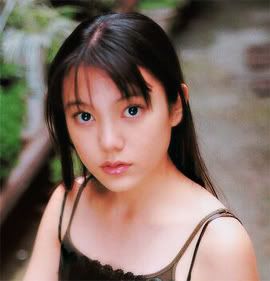Japanese sento is closer to Turkish Hamam than banya or sauna.
 Japanese bath ‘sento’ reminds of the Roman bath presented by the Turkish Hamam in the modern World(look through Living on the last floor you can build your own Turkish Hamam). They both were created for relaxation and contemplation. Soaking, submerged to the chin, you have a sensual pleasure and a feeling of well-being and harmony with the natural surroundings, perhaps the garden or landscape beyond. So here they don’t cultivate the hard style groovy procedures which we have to undergo in Russian banya or Finnish sauna. Here you can take pleasure without enduring extra high temperature and hot steam. Japanese bath reflects the traditions and culture of Japan, a unique and interesting country.
Japanese bath ‘sento’ reminds of the Roman bath presented by the Turkish Hamam in the modern World(look through Living on the last floor you can build your own Turkish Hamam). They both were created for relaxation and contemplation. Soaking, submerged to the chin, you have a sensual pleasure and a feeling of well-being and harmony with the natural surroundings, perhaps the garden or landscape beyond. So here they don’t cultivate the hard style groovy procedures which we have to undergo in Russian banya or Finnish sauna. Here you can take pleasure without enduring extra high temperature and hot steam. Japanese bath reflects the traditions and culture of Japan, a unique and interesting country.
Japanese bath ‘sento’ has existed for over 400 years in Japan, but a post-war construction boom in residential housing without bathing facilities or running water cemented its prominence in the community. The bath numbers are going down today as Japanese can now afford baths or showers in their own homes. They say that sento are disappearing at the rate of one a day. Numbers peaked in 1964 at 23,016, but are currently at 8,422. For a class-conscious society, the sento has become an embarrassing reminder of an impoverished past. Japanese bath ‘sento’ remains a veritable oasis in many communities, especially in the suffocating summers. As an example, in the northern suburbs of Osaka, a mega-sento was built in the 1960s for families. On a Friday night, this groovy water world, featuring an outdoor hot spring and noodle bar, is the Al’s Aquatic Diner of family entertainment. Operating 24/7, this sento is a more modest and family-oriented version of some of the wilder forms of Japanese bath entertainment that exists today.
bathing facilities or running water cemented its prominence in the community. The bath numbers are going down today as Japanese can now afford baths or showers in their own homes. They say that sento are disappearing at the rate of one a day. Numbers peaked in 1964 at 23,016, but are currently at 8,422. For a class-conscious society, the sento has become an embarrassing reminder of an impoverished past. Japanese bath ‘sento’ remains a veritable oasis in many communities, especially in the suffocating summers. As an example, in the northern suburbs of Osaka, a mega-sento was built in the 1960s for families. On a Friday night, this groovy water world, featuring an outdoor hot spring and noodle bar, is the Al’s Aquatic Diner of family entertainment. Operating 24/7, this sento is a more modest and family-oriented version of some of the wilder forms of Japanese bath entertainment that exists today.
In the past, Japanese people enjoyed the daily ritual with their relatives and friends in a public bath (the ‘sento’) or in a hot spring bath (the ‘onsen’). It was not until the middle of this century that the water supply made it possible for most people to have a private ‘ofuro’, although the ‘onsen’ and the ‘sento’ remain popular for many Japanese people. The popularity of the Hot Springs ‘onsen’ is connected with the geological age of the places and centuries-old work on accomplishing by great Japanese masters of landscape design.
Wonderful Japanese landscape is the main thing in the ‘sento’ too. The tub location close to nature is the appealing feature of the Japanese bath. Meditating under a blooming ‘sakura’ is as important for Japanese as sweating in hot steam chamber for Russians. For more look through:
for Japanese as sweating in hot steam chamber for Russians. For more look through:
- What's most important in Finnish sauna or Russian banya?,
- Master Boris and his “venik” – its better then Viagra! and
- I can have more health & beauty only in Russian bath than in Finnish sauna!.
 ious article Japanese bath ‘sento’ -- Sauna in the blooming garden.
ious article Japanese bath ‘sento’ -- Sauna in the blooming garden.
 Being keen on the world traditions of bath culture I have changed my favorite Thailand into super-modern Japan. I have enjoyed and learned Finnish Saunas in Finland, Russian banya in Russia and Turkish Hamam in Turkey. For more look through
Being keen on the world traditions of bath culture I have changed my favorite Thailand into super-modern Japan. I have enjoyed and learned Finnish Saunas in Finland, Russian banya in Russia and Turkish Hamam in Turkey. For more look through


